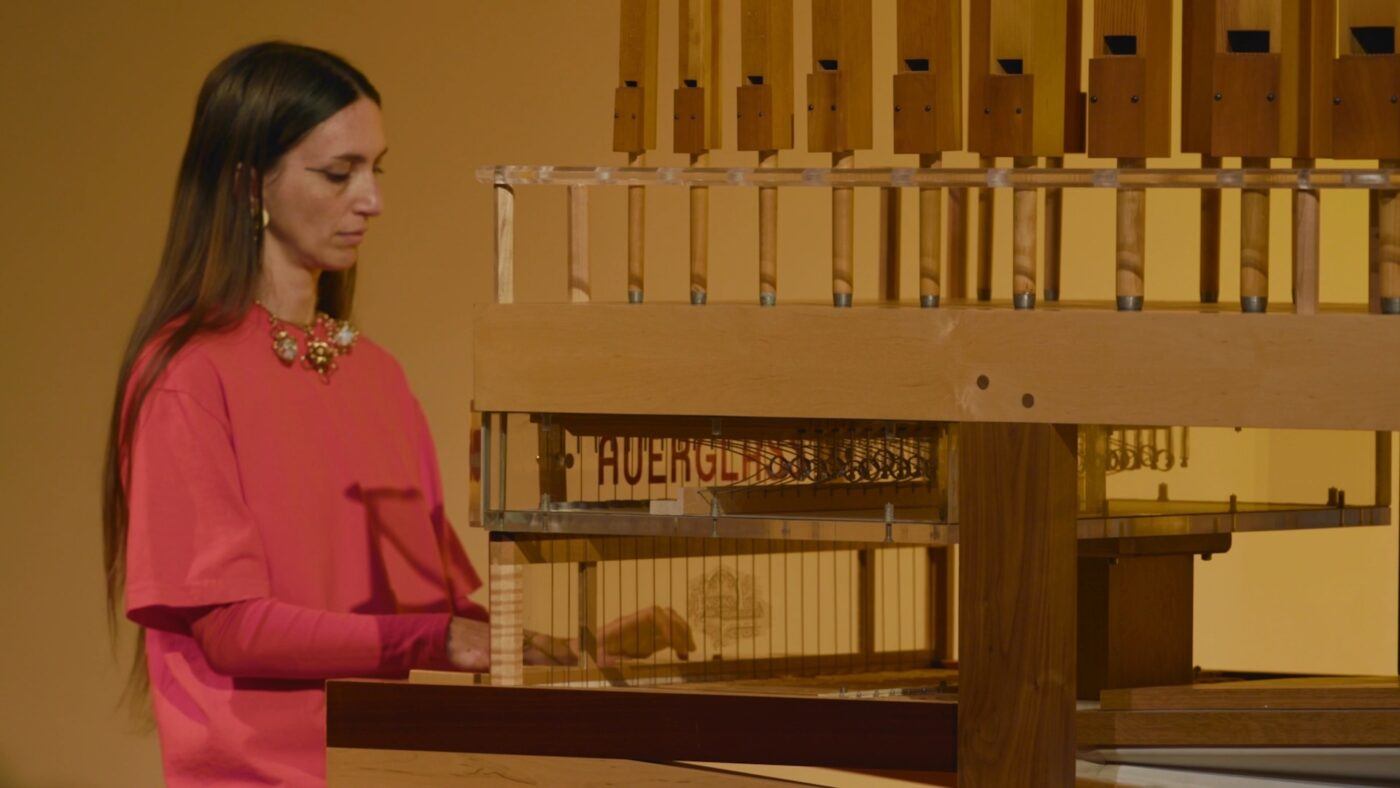Tauba Auerbach

Tauba Auerbach was born in 1981 in San Francisco, California, and currently lives and works in New York City. The artist received a BA in Visual Studies from Stanford University in 2003. Interested in the relationships between materials, ideas, and people, Auerbach examines connective tissues and structures using a wide variety of materials and processes. Their practice weaves bodily craft traditions with abstract theory to create drawings, paintings, sculptures, and more that expand our comprehension of how the world is structured and connected.
Auerbach’s practice attends to the processes through which materials and information are translated and transformed, examines how linking structures function in different forms and contexts, and reveals how a fixed or narrow perspective can limit our perception. In Auerbach’s Crumple VII (2009), they crumple a blank piece of paper and smooth it out, photograph the wrinkled sheet, and use a halftone printing process to transfer the image at a low resolution onto a stretched canvas. In this work, the artist records the journey of the two-dimensional sheet of paper in and out of three-dimensionality through the wrinkles and creases that appear on the canvas, and emphasizes the processes of translation between dimensions and mediums. Entwining embodied knowledge with academic research, Auerbach is able to visualize connections between seemingly disparate contexts and disciplines, recognizing the forms and concepts that repeat. In Ligature Drawing, 01 February 19 (2019), one of an ongoing series of such drawings, a single gestural mark is made and extended in five continuous chains arranged on the page with different lengths, orientations, and line thicknesses. As the gesture is repeated on the page, each unit becomes contextualized and determined by its relationship to other units. A deeply embodied drawing practice, the mesmerizing effect of the artist’s Ligature Drawings is as much produced by conscious effort as it is by intuitive knowledge.
Through their investigations, Auerbach develops new methods of seeing and thinking about our world. Craft traditions like marbling paper, weaving, and sign-painting are important sites of research and making for the artist. Learning experientially and through the body is significant for Auerbach, helping them to contemplate and engage the questions and theories that they encounter in their studies of mathematics, physics, and art-making. The artist frequently acquires new skills to maximize the impact of their work, such as learning to flamework glass to create A Flexible Fabric of Inflexible Parts (2015), a sculpture comprised of eleven glass helices coated with a pigment that sorts light by wavelength as it passes through the glass. In Flow Separation (2018), the artist transforms the John J. Harvey Fireboat with their own “dazzle pattern,” a design technique developed during World War I to confuse enemy ships. To create their pattern, Auerbach learned to marble paper, manipulating floating dyes in a liquid solution to mimic the pattern of the ship’s wake and applying the resulting designs to the fireboat. The artist’s practice expands the scope of what we can know, looking beyond a system’s various parts and wholes to emphasize the less apparent threads that connect them all.
Videos 2
“I am quite compelled by things that just barely work. The near–impossibility is key.”
Tauba Auerbach


